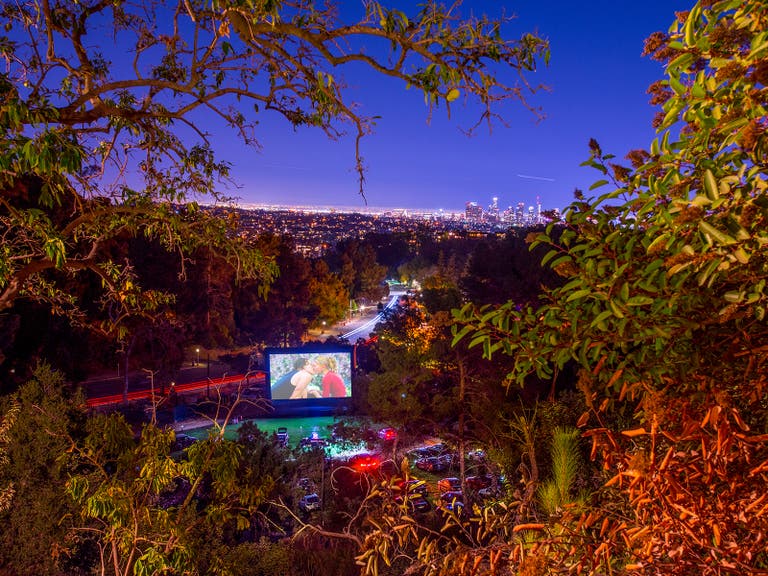Latino Heritage in Los Angeles: Murals
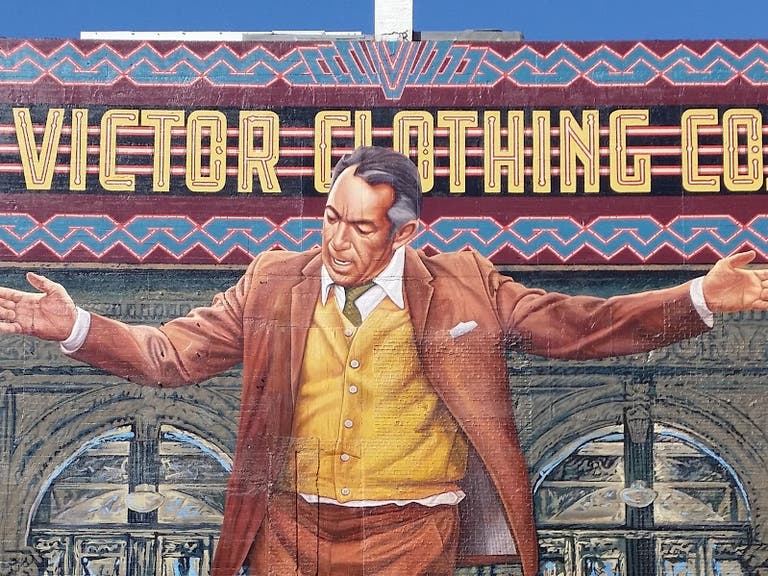
Murals are a city's urban canvas, expressing the history, concerns and aspirations of a community. Though they are susceptible to weather, vandalism and decay, murals are also freely visible and open for all to enjoy. For generations, Los Angeles has been renowned as one of the world’s great mural capitals. Latino artists and their culture are an integral part of the city’s mural heritage. You can travel between multicultural neighborhoods and view murals as if they’re on display in the wings of a vast, concrete museum. Here are ten exemplary pieces to discover throughout L.A.
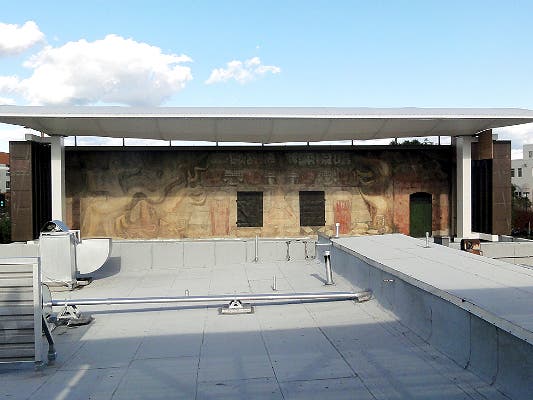
América Tropical
Along with Diego Rivera and José Clemente Orozco, the great Mexican muralist/painter, David Alfaro Siqueiros established "Mexican Muralism." The tradition continues in Mexico today and inspired the Chicano art movement in the U.S. During his time in Los Angeles, Siqueiros created América Tropical, an 80x18 foot mural located above Olvera Street, the birthplace of Los Angeles. Completed in 1932, the mural depicts a Mexican Indian crucified on a cross beneath an American eagle, with two sharpshooters aiming at the eagle from nearby. It's the first large-scale mural in the U.S. that created a public space by being painted on an ordinary exterior wall. The mural’s political message about the exploitation of Mexican workers caused immediate controversy, and it was soon completely whitewashed. América Tropical was restored by the Getty Conservation Institute and opened to the public in October 2012 with a new viewing platform and interpretive center.

Pope of Broadway
Located across the street from the landmark Bradbury Building in Downtown LA, the Pope of Broadway is a 70-foot mural of legendary actor Anthony Quinn, who was born in Chihuahua, Mexico and grew up in East LA. Painted by Eloy Torrez on the Victor Clothing Building in 1984, the mural depicts Quinn dancing in front of the Bradbury. Quinn’s Christ-like pose evokes his Oscar-nominated performance as the title character in Zorba the Greek. Torrez completely restored the mural in January 2017.
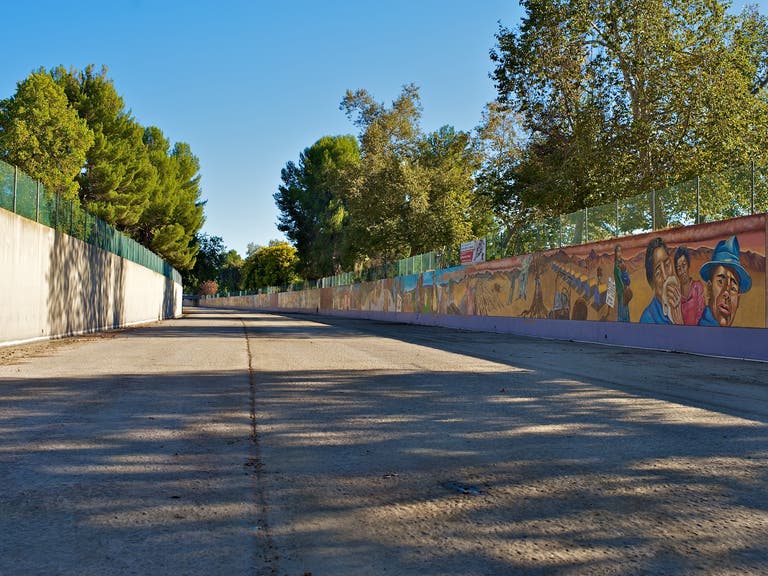
The Great Wall of Los Angeles
This epic, half-mile long mural tells the story of California from prehistory to the 1950s. Known as one of the longest murals in the world, The Great Wall of Los Angeles contains chronologically ordered vignettes, beginning with dinosaurs on one end and the Baby Boom at the other. The mural was designed by Judith Baca, founder of the Social and Public Art Resource Center (SPARC). The mural was begun in 1974 and completed over five summers, employing over 400 youth and their families from diverse social and economic backgrounds, working with artists, oral historians, ethnologists, scholars, and hundreds of community members.
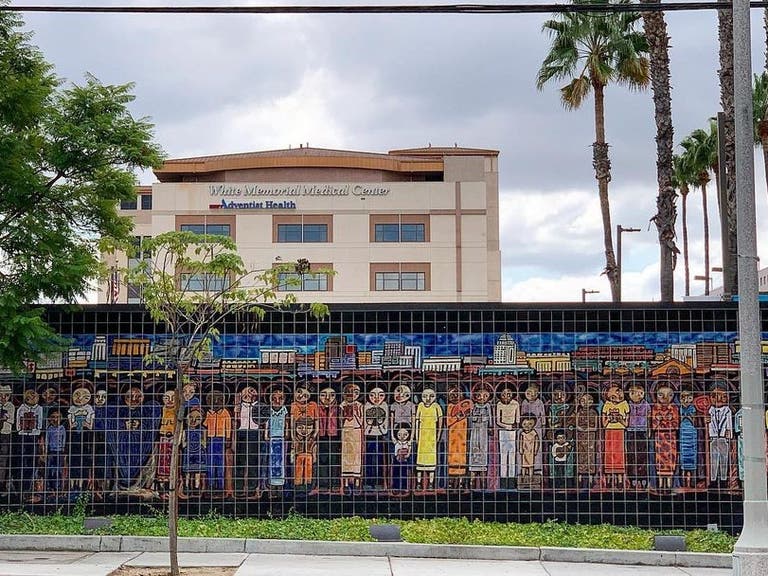
"Comunidad" - White Memorial Medical Center
The grounds of the White Memorial Medical Center contain many paintings, sculptures and tile work for patients to peruse as they convalesce. One of the most prominent is a tile mural on the Cesar Chavez Avenue side, Comunidad by Jose Ramirez. The 2004 mural features a Los Angeles cityscape in the background and its global citizens in the foreground.
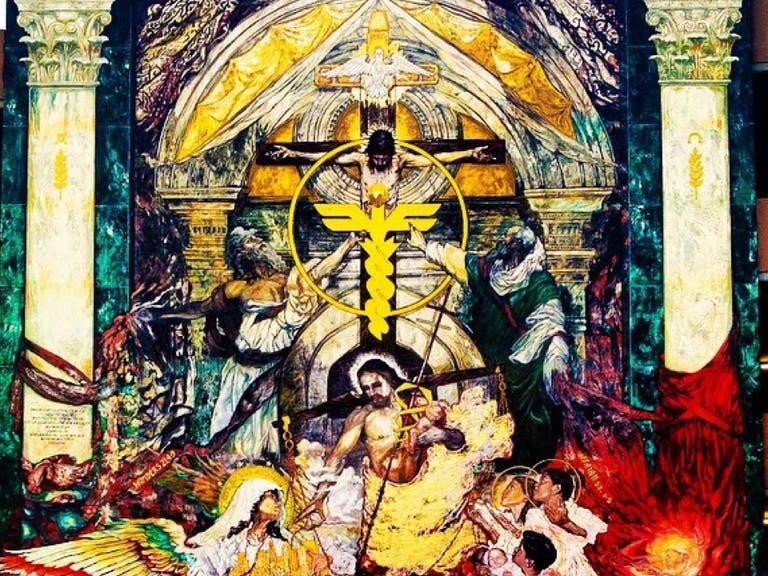
Tikkun Olam - To Repair the World
Across the street from the medical center is Tikkun Olam - To Repair the World, by George Yepes. The 1997 mural rises 36 feet on the side of a parking lot, depicting Christ on the cross as well as after his resurrection. Music fans will recognize Yepes from his cover art for the 1988 Los Lobos album, La Pistola y El Corazon.
